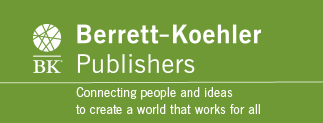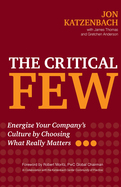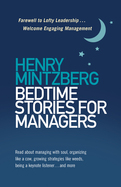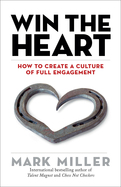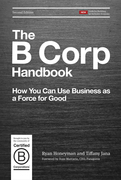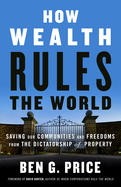Search Results: ""
Results 1027-1032 of 1358
The Critical Few
2019
In a global survey by the Katzenbach Center, 80 percent of respondents believed that their organization must evolve to succeed. But a full quarter of them reported that a change effort at their organization had resulted in no visible results. Why?
The fate of any change effort depends on whether and how leaders engage their culture: the self-sustaining patterns of behaving, feeling, thinking, and believing that determine how things are done in an organization. Culture is implicit rather than explicit, emotional rather than rational--that's what makes it so hard to work with, but that's also what makes it so powerful.
For the first time, this book lays out the Katzenbach Center's proven methodology for identifying your culture's four most critical elements: traits, characteristics that are at the heart of people's emotional connection to what they do; keystone behaviors, actions that would lead your company to succeed if they were replicated at a greater scale; authentic informal leaders, people who have a high degree of "emotional intuition" or social connectedness; and metrics, integrated, thoughtful measures to track progress, encourage the self-reinforcing cycle of lasting change and link to business performance.
By leveraging these critical few elements, you can tap into a source of catalytic change within your organization. People will make an emotional, not just a rational, commitment to new initiatives. You will elicit enthusiasm and creativity and build the kind of powerful company that people recognize for its innate value and effectiveness.
The fate of any change effort depends on whether and how leaders engage their culture: the self-sustaining patterns of behaving, feeling, thinking, and believing that determine how things are done in an organization. Culture is implicit rather than explicit, emotional rather than rational--that's what makes it so hard to work with, but that's also what makes it so powerful.
For the first time, this book lays out the Katzenbach Center's proven methodology for identifying your culture's four most critical elements: traits, characteristics that are at the heart of people's emotional connection to what they do; keystone behaviors, actions that would lead your company to succeed if they were replicated at a greater scale; authentic informal leaders, people who have a high degree of "emotional intuition" or social connectedness; and metrics, integrated, thoughtful measures to track progress, encourage the self-reinforcing cycle of lasting change and link to business performance.
By leveraging these critical few elements, you can tap into a source of catalytic change within your organization. People will make an emotional, not just a rational, commitment to new initiatives. You will elicit enthusiasm and creativity and build the kind of powerful company that people recognize for its innate value and effectiveness.
If you're like most managers and things keep you up at night, now you can turn to a book that's designed especially for you! But you won't find talking rabbits or princesses here. (There is a cow, but it doesn't jump.) Henry Mintzberg has culled forty-two of the best posts from his widely read blog and turned them into a deceptively light, sneakily serious compendium of sometimes heretical reflections on management.
The moral here is this: managers need to leave their castles and find out what's actually going on in their kingdoms. And like real bedtime stories, these essays have metaphors galore. So prepare to grow strategies like weeds and organize like a cow. Discover the maestro myth of managing, find the soft underbelly of hard data, and learn why downsizing is bloodletting and your board should be a bee. Mintzberg writes, “Just try not to be outraged by anything you read, because some of my most outrageous ideas turn out to be my best. They just take a while to become obvious.”
The moral here is this: managers need to leave their castles and find out what's actually going on in their kingdoms. And like real bedtime stories, these essays have metaphors galore. So prepare to grow strategies like weeds and organize like a cow. Discover the maestro myth of managing, find the soft underbelly of hard data, and learn why downsizing is bloodletting and your board should be a bee. Mintzberg writes, “Just try not to be outraged by anything you read, because some of my most outrageous ideas turn out to be my best. They just take a while to become obvious.”
Win the Heart
2019
Every great company has an engaged workforce, and nurturing a culture of engagement is at the heart of great leadership—employees who really care about their work, their coworkers, and the organization can supercharge a company's success. But for many years, engagement has been suffering. Gallop reports that 70 percent of employees are not fully engaged on the job. Mark Miller draws on more than forty years of leadership experience to show leaders at all levels how to change the conversation and create real competitive advantage in the process.
In the fourth book in Miller's High Performance Series, CEO Blake Brown sets out to discover how to create the kind of workplace where everyone feels excited to come to work, passionate about what he or she brings to the company, and energized at the end of the day. It's a journey that takes him literally all over the world—from Italy to Greece to Green Bay and more. What he discovers from the pages of history is as relevant as the evening news.
Engagement unleashes untapped potential buried deep within the hearts of your people. An engaged workforce is more creative, more driven, and more enthusiastic about reaching company goals. If you put the lessons in this book to work, your people will never look at work, or their leaders, the same way again.
In the fourth book in Miller's High Performance Series, CEO Blake Brown sets out to discover how to create the kind of workplace where everyone feels excited to come to work, passionate about what he or she brings to the company, and energized at the end of the day. It's a journey that takes him literally all over the world—from Italy to Greece to Green Bay and more. What he discovers from the pages of history is as relevant as the evening news.
Engagement unleashes untapped potential buried deep within the hearts of your people. An engaged workforce is more creative, more driven, and more enthusiastic about reaching company goals. If you put the lessons in this book to work, your people will never look at work, or their leaders, the same way again.
What do you do when the biggest threat to your project is your boss? It's not that your boss is out to get you. In fact, bosses generally mean well. But clueless leadership from a well-intentioned boss can sometimes cause more damage than a criminal mastermind tying your project to the railroad tracks.
The Unwritten Rules of Managing Up provides refreshingly practical and candid insight into the best practices and techniques that project managers have successfully used for decades to manage a wide variety of senior-level stakeholders—ranging from perfectly competent and pleasant to downright dysfunctional and inept.
While managing up is an incredibly valuable skill for virtually any type of boss (not just the difficult ones), the book includes recommendations for managing six particularly challenging—and common—types of senior leaders. They are the bombastic Tornado, who takes over meetings without realizing it; the Wishful Thinker, who regularly asks the impossible; the Clueless Chameleon, who can't quite decide what he or she really wants (but still holds you responsible for delivering it); the MIA Boss, who is just not around enough; the Meddlesome Micromanager, who hovers and insists you complete a task his or her way; and the Naked Emperor, who falls in love with his or her own crazy ideas. Brownlee also offers basic techniques to use with any boss, even a great one.
This book is not just for professionals seeking to enhance their workplace effectiveness but also for senior leaders interested in addressing their blind spots and coaching others toward a more collaborative, results-focused leadership approach.
The Unwritten Rules of Managing Up provides refreshingly practical and candid insight into the best practices and techniques that project managers have successfully used for decades to manage a wide variety of senior-level stakeholders—ranging from perfectly competent and pleasant to downright dysfunctional and inept.
While managing up is an incredibly valuable skill for virtually any type of boss (not just the difficult ones), the book includes recommendations for managing six particularly challenging—and common—types of senior leaders. They are the bombastic Tornado, who takes over meetings without realizing it; the Wishful Thinker, who regularly asks the impossible; the Clueless Chameleon, who can't quite decide what he or she really wants (but still holds you responsible for delivering it); the MIA Boss, who is just not around enough; the Meddlesome Micromanager, who hovers and insists you complete a task his or her way; and the Naked Emperor, who falls in love with his or her own crazy ideas. Brownlee also offers basic techniques to use with any boss, even a great one.
This book is not just for professionals seeking to enhance their workplace effectiveness but also for senior leaders interested in addressing their blind spots and coaching others toward a more collaborative, results-focused leadership approach.
“This book shows how using business as a force for good, not just pursuing short-term profits, can be better for consumers, employees, local communities, the environment, and your company's long-term bottom line.”
—Tony Hsieh, New York Times bestselling author of Delivering Happiness and CEO, Zappos.com, Inc.
B Corps are a global movement of more than 2,700 companies in 60 countries—like Patagonia, Ben & Jerry's, Kickstarter, Danone North America, and Eileen Fisher—that are using the power of business as a force for good. B Corps have been certified to have met rigorous standards of social and environmental performance, accountability, and transparency. This book is the authoritative guide to the what, why, and how of B Corp certification.
Coauthors Ryan Honeyman and Dr. Tiffany Jana spoke with the leaders of over 200 B Corps from around the world to get their insights on becoming a Certified B Corp, improving their social and environmental performance, and building a more inclusive economy. The second edition has been completely revised and updated to include a much stronger focus on diversity, equity, and inclusion (DEI). These changes are important because DEI can no longer be a side conversation—it must be a core value for any company that aspires to make money and make a difference.
While this book is framed around the B Corp movement, any company, regardless of size, industry, or location, can use the tools contained here to learn how to build a better business. As the authors vividly demonstrate, using business as a force for good can help you attract and retain the best talent, distinguish your company in a crowded market, and increase trust in your brand.
—Tony Hsieh, New York Times bestselling author of Delivering Happiness and CEO, Zappos.com, Inc.
B Corps are a global movement of more than 2,700 companies in 60 countries—like Patagonia, Ben & Jerry's, Kickstarter, Danone North America, and Eileen Fisher—that are using the power of business as a force for good. B Corps have been certified to have met rigorous standards of social and environmental performance, accountability, and transparency. This book is the authoritative guide to the what, why, and how of B Corp certification.
Coauthors Ryan Honeyman and Dr. Tiffany Jana spoke with the leaders of over 200 B Corps from around the world to get their insights on becoming a Certified B Corp, improving their social and environmental performance, and building a more inclusive economy. The second edition has been completely revised and updated to include a much stronger focus on diversity, equity, and inclusion (DEI). These changes are important because DEI can no longer be a side conversation—it must be a core value for any company that aspires to make money and make a difference.
While this book is framed around the B Corp movement, any company, regardless of size, industry, or location, can use the tools contained here to learn how to build a better business. As the authors vividly demonstrate, using business as a force for good can help you attract and retain the best talent, distinguish your company in a crowded market, and increase trust in your brand.
Crackdowns on local democracy are accelerating, as corporate and state interests continue efforts to repress social movements. In this well-timed book, Ben Price presciently reveals structures of power and law that facilitate blatant corporate supremacy in the United States. Price uses his years of experience as a community organizer and a careful reading of history to show how a legal paradigm that facilitated slavery and the fossil fuel economy has endured and adapted over time – today barricading our communities and squelching dissent.
Many books have been written about wealth, power and politics in the United States. Most of them make intuitive sense. Wealthy people use their power to influence and control politics. But Ben Price's new book is often counterintuitive as he explores how wealth itself is imbued with power. He answers questions such as:
How is the American Legislative Exchange Council – a modern states' rights, free market capitalist group – the intellectual and political descendant of George Washington's Federalist Party?
How was the Fourteenth Amendment that emancipated African American slaves from their status as property used by a reactionary Supreme Court to grant legal “personhood” to private corporations?
How are cities seen under our legal doctrine as “public corporations,” devoid of real governing authority?
Further, Price identifies key counterrevolutions in U.S. history that squelched the transformative potential of the Civil War and American Revolution, and traces the roots of colonial and imperial systems of control. He links them to modern “free trade” agreements and other antidemocratic structures used to supersede democracy to this day.
For some, this will come as no surprise. For others, it will be a rude, though necessary, awakening. “The white man's municipalities are just reservations, like ours,” said a resident of Pine Ridge Reservation, who Price spoke with. "The difference is, we know we live on reservations. The white man doesn't.”
Crucially, Price shares insight into how social movements can plant seeds of a new legal system that makes the liberty, civil rights and dignity of humans and ecosystems its ultimate purpose. In fact, he introduces the reader to people who are doing just that.
Many books have been written about wealth, power and politics in the United States. Most of them make intuitive sense. Wealthy people use their power to influence and control politics. But Ben Price's new book is often counterintuitive as he explores how wealth itself is imbued with power. He answers questions such as:
How is the American Legislative Exchange Council – a modern states' rights, free market capitalist group – the intellectual and political descendant of George Washington's Federalist Party?
How was the Fourteenth Amendment that emancipated African American slaves from their status as property used by a reactionary Supreme Court to grant legal “personhood” to private corporations?
How are cities seen under our legal doctrine as “public corporations,” devoid of real governing authority?
Further, Price identifies key counterrevolutions in U.S. history that squelched the transformative potential of the Civil War and American Revolution, and traces the roots of colonial and imperial systems of control. He links them to modern “free trade” agreements and other antidemocratic structures used to supersede democracy to this day.
For some, this will come as no surprise. For others, it will be a rude, though necessary, awakening. “The white man's municipalities are just reservations, like ours,” said a resident of Pine Ridge Reservation, who Price spoke with. "The difference is, we know we live on reservations. The white man doesn't.”
Crucially, Price shares insight into how social movements can plant seeds of a new legal system that makes the liberty, civil rights and dignity of humans and ecosystems its ultimate purpose. In fact, he introduces the reader to people who are doing just that.
